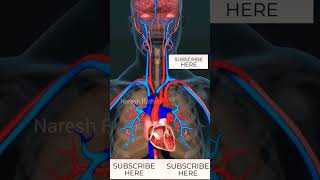![]()
How Our Heart Works: The Engine of Life
The human heart, a marvel of biological engineering, functions tirelessly to sustain life. This muscular organ, roughly the size of a fist, is the epicenter of the circulatory system, ensuring that oxygen-rich blood reaches every cell in the body. Understanding how our heart works is crucial for maintaining cardiovascular health and appreciating the intricate processes that keep us alive.
The Anatomy of the Heart
The heart is divided into four chambers: the left and right atria (upper chambers) and the left and right ventricles (lower chambers). The right side of the heart handles deoxygenated blood, while the left side manages oxygenated blood. Four key valves — the tricuspid, pulmonary, mitral, and aortic valves — regulate blood flow, ensuring it moves in the correct direction.
- Right Atrium and Ventricle: The right atrium receives deoxygenated blood from the body through the superior and inferior vena cavae. This blood then flows into the right ventricle, which pumps it to the lungs via the pulmonary artery for oxygenation.
- Left Atrium and Ventricle: Oxygen-rich blood returns from the lungs to the left atrium, passing into the left ventricle. The left ventricle, the heart’s most powerful chamber, pumps this oxygenated blood into the aorta, distributing it throughout the body.
The Cardiac Cycle
The heart operates through a rhythmic cycle of contraction (systole) and relaxation (diastole). This cycle is meticulously regulated by the heart’s electrical system, ensuring a steady heartbeat, typically around 60-100 beats per minute in a healthy adult.
- Systole: During systole, the ventricles contract, pushing blood out of the heart. The right ventricle sends blood to the lungs, while the left ventricle propels it to the rest of the body.
- Diastole: In diastole, the heart muscles relax, allowing the chambers to fill with blood. The atria contract slightly to ensure the ventricles are fully loaded for the next contraction.
The Electrical Conduction System
The heart’s electrical system controls the timing of each heartbeat. This system includes the sinoatrial (SA) node, atrioventricular (AV) node, and the His-Purkinje network.
- Sinoatrial (SA) Node: Often called the natural pacemaker, the SA node initiates the electrical impulse that starts each heartbeat. Located in the right atrium, it sets the pace for the heart rate.
- Atrioventricular (AV) Node: The AV node acts as a gateway, slowing the electrical signal before it enters the ventricles. This delay ensures the atria have time to fully contract before the ventricles do.
- His-Purkinje Network: This network of fibers distributes the electrical impulse through the ventricles, prompting them to contract and pump blood.
Blood Circulation: The Lifeline
Blood circulation is a continuous loop, critical for delivering oxygen and nutrients to tissues and removing waste products. There are two primary circuits: the pulmonary circuit and the systemic circuit.
- Pulmonary Circuit: This circuit transports deoxygenated blood from the right ventricle to the lungs via the pulmonary arteries. In the lungs, blood absorbs oxygen and releases carbon dioxide, then returns to the left atrium through the pulmonary veins.
- Systemic Circuit: Oxygenated blood from the left ventricle is pumped into the aorta and distributed to the entire body. After delivering oxygen and nutrients, the now deoxygenated blood returns to the right atrium via the vena cavae, completing the cycle.
Keeping the Heart Healthy
Maintaining heart health is essential for a long and active life. Key strategies include:
- Balanced Diet: Consuming a diet rich in fruits, vegetables, whole grains, and lean proteins supports heart health. Limiting saturated fats, trans fats, and sodium helps prevent hypertension and atherosclerosis.
- Regular Exercise: Physical activity strengthens the heart muscle, improves circulation, and helps manage weight and stress.
- Avoiding Smoking: Smoking damages the cardiovascular system, leading to heart disease. Quitting smoking is one of the best steps toward heart health.
- Managing Stress: Chronic stress can harm the heart. Techniques like mindfulness, meditation, and regular relaxation can reduce stress levels.
